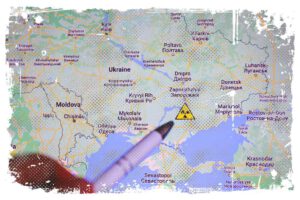I would like to present you how the equipment of a individual soldier of the Polish army looks like. Please note that it will depend on the given situation and the task the soldier actually gets. That is when the final equipment is adjusted. Below you will find an overview of the necessary items we need to equip a single polish soldier. I will start with the most important one, which is the weapon.

Soldier’s Firearms in Polish Army
Weapons of polish soldier always include an assault rifle and a pistol. There is also a set of cartridges and cleaning tools. Tactical equipment consists of:
- MP6 gas mask
- chemical light
- flashlights (preferably two)
- backup batteries for flashlights
- duct tape
- camouflage elements
- knee pads
- communication devices (preferably two pieces)
- compass
- multitool
- shooting glasses, sunglasses
- tactical gloves
- rain poncho
- white winter suit
- zip ties
- hand saw
- handcuffs
- active headphones for shooting.
Further equipment includes camouflage elements, a tactical vest or tactical belt.
Another piece of equipment is the uniform. This special uniform is what soldiers wear in most cases they are on duty. You can carry part of the uniform in a backpack as well. The uniform of a Polish soldier consists of a sweatshirt, T-shirt, cap, beret, winter cap, hat, boots and shoe cleaning accessory. Additional equipment includes the following listed below.
↳ PRO TIP: Do you like traveling? Then before you buy any ticket or book an attraction, check if it's available in this worldwide Viator Database. You may save a lot of money and time. No need to thank me :)
Additional Equipment
The backpack, sleeping bag, sleeping pad, an extra underwear. This gear is usually stored inside individual plastic bags. The point is that when unpacking or when the soldier is getting through some water barriers, it is important that these items do not get wet. Polish soldier in such a bag typically carries long underwear, short underwear, spare socks, toiletries, personal hygiene items, food portion, mug, bottle of water, map. Also, it’s a good idea to have something to write with, laundry detergent, and of course, medical equipment. Usually this is a medical bag or first aid kit.
First Aid Kit
When it comes to the first aid kit equipment that Polish soldiers should have, it is important to remember that the individual military first aid kit is very different from the first aid kit we have in our car. The soldiers aid kit in polish army is a called „individual set of medical equipment”. It is designed based on the factors that occur on the battlefield most often. In other words, it is made according to the main causes of death.
The leading cause of death on the battlefield is massive bleeding. Primarily, these are bleeding from the extremities, and for stopping such bleeding (both yourself or another person) we use tactical tourniquet. Secondarily, there are bleedings in the area where the extremity connects to the torso. This is, for example, the groin and armpit area.
Army Dressing Types
These are the places where we are unable to use a tourniquet. This is where a soldier uses a hemostatic dressing. A hemostatic dressing is a special type of bandage soaked in a chemical substance that produces a coagulation reaction when it makes contact with blood. More simply, after it comes into contact with blood, a blood clot forms much faster.
Other items of equipment that are quite essential are various types of personal dressings. The most popular on the market in Poland are Israeli dressings. When opened, we find gauze and a plastic buckle, which allows us to apply additional pressure to the bleeding spot. There is also a popular American dressing. The bandage has a special plastic that applies point pressure to the bleeding area.
If we don’t have a hemostatic agent, then we can find a wrap that can be used as an improvised dressing to seal a chest wound. When it comes to hemorrhages, this is the basic equipment of a Polish soldier, which should be in such first-aid kit.
Another important thing is the vent dressings. Those are dressings that protect chest injuries. That is a special membrane that does not let air through, but there is a one-way valve in the center. The valve works in such a way that air from the outside cannot get inside the chest, but the air that is inside the chest is being pushed out. It would be good if there were 2 such dressings in such a kit, so that the entry and exit wounds of the chest can be protected.
Other Items
The next thing that should be included in the kit is an emergency blanket or NRC foil. This is the cheapest solution to prevents heat loss in a trauma victim. Another item that should be included in the first aid kit is a nasopharyngeal tube. It secures the passability of the respiratory system.
With such a kit, a polish soldier can protect most important wounds. It is massive bleeding, bleeding from extremities, bleeding from difficult-to-reach areas, airway obstruction and chest injuries.
Rifles and Pistols in the Polish Army
Let’s start with the oldest designs. That is, those from the Kalashnikov family. We are talking of course, about AKM and AKMS. Actually, I think everyone knows Kalashnikov and there is no point in introducing it too much, so I will only refer to its most important features. This rifle is powered by 7.62×39 mm ammunition. The weapon weighs 3.45 kg unloaded (AKM version), and the version with a folding butt stock (AKMS) weighs 3.42 kg. In both versions, the rifle is slightly lighter than the Beryllium. The AKMS is the most widely used version in the Polish army, but it should be noted that Kalashnikov guns have been mostly replaced from our military by newer designs. The AK47 is used rather for training, such as during the preliminary service.
Glauberyt
Let’s now move to the Glauberyt machine pistol. It has been in development since the early 1970s, and produced since 1984 at a weapons factory in Radom, Poland. This submachine gun was developed in order to replace another one (wz 1963) popularly known as the RAK. The Glauberyt is powered by 9×19 mm parabellum ammunition. In the beginning, however, there was a version developed and produced that was powered by Makarov ammunition, i.e. 9×18 mm. The PM-84 version of the rifle weighs 1.80 kg, while the PM-84P version weighs 2.17 kg. The PM-98 and PM-06 versions weight is approximately 2.5 kg.
| GLAUBERYT TECHNICAL DATA | PM | PM-98S | PM-06 |
| Cartridge | 9 × 19 mm Parabellum | 9 × 19 mm Parabellum | 9 × 19 mm Parabellum |
| Length with stock folded/unfolded (mm) | 405/605 | 405/605 | 392/615 |
| Height with 15/25 round magazine (mm) | 172/220 | 172/220 | 177/224 |
| Width (mm) | 58 | 58 | 62 |
| Barrel length (mm) | 185 | 185 | 185 |
| Sight line length (mm) | 280 | 280 | 280 |
| Weapon weight unloaded (kg) | 2.42 | 2.42 | 2.50 |
| Weapon weight with 15/25 round magazine (kg) | 2.59/2.86 | 2.59/2.86 | 2.79/2.94 |
| Muzzle velocity (m/s) | 360 | 360 | 360 |
| Theoretical rate of fire (rpm) | 640 | 770 | 640 |
| Effective Range (m) | ~150 | ~150 | ~150 |
In Poland, glauberyt is used by the police, border guards as well as, by polish military forces. It is also used as a piece of equipment for combat vehicles. The PM-94P and PM-98 versions are used in the Polish army, and I have not come across information that these machine guns were also purchased as PM-06 versions.
Beryl Rifle
The next design we will talk about is Beryl rifle. This was the Polish soldiers’ standard weapon. The prototype research began in 1995, and the carbine was put into production at the Radom arms factory in 1997. The need for a new weapon for the 5.56x45mm cartridge was inspired by Poland’s aspirations to join NATO.

As we know, the 5.56 caliber ammunition is exactly the standard of NATO alliance. The design of the Beryl was based on the construction of another Polish gun. We are talking about the Tantal carbine. The Tantal carbine was based on the Kalashnikov and the Lantan rifle. Tantal was a carbine using 5.45 ammunition and one could say that it was such a Polish equivalent of the Russian AK74.
Poland produced about 2,000 of these guns, but after the government had decided to adopt a carbine for NATO ammunition, Tantal production was discontinued. It was replaced by the Beryl, which is interesting because it replaced all Tantal carbines, but Kalashnikov remains in the Polish army, despite being much older.
The Beryl WZ96 unloaded weighs 3.5 kg. The mini beryl WZ96 weighs about 3.40 kg, and the Beryl WZ96C, 3.65 kg. The mini beryl, as the name implies, it is a shortened version of the classic one. Its length with the butt extended is 76 cm, while the length of the standard version is 94 cm. This version has a redesigned gas tube and piston, and a new outlet device and foregrip have been added. The shortened version of the Beryl is still developed in parallel with its longer versions.

Iraq and Afganistan Experience
An example of such development is the Model 96B, which appeared in 2004. It was built based on the experience in Iraq. That version got a fixed foregrip and two smaller rails. These changes were determined by soldiers who expressed the need to mount a tactical light and a laser indicator at the same time. After the mission in Iraq, it was time to start preparing for the next mission. And this time in Afghanistan.
They decided to upgrade the Beryl again. This time for the 96C version, or as some call – the 2004 model. The scope of the changes was even bigger. The old folding buttstock was replaced with a new adjustable one. It allowed adjustment to the soldier’s personal anatomy.
A new ergonomic pistol grip and a new aluminum bed were added. This is essentially packed with mounting rails, so that the soldier can adapt the rifle to various tasks.
The rifle in this version is ordered since 2009. The other ones, the Model 96 A and B, are revised and updated to meet the latest standards. It is also worth to mention the cartridges. They are made of plastic. The downside is that they are not compatible with other NATO weapons.
Beryl was used in Lithuania and Nigeria
What is also worth mentioning is the international usages of these weapons. Beryls were in service by Lithuanian special forces in a quantity of 90 rifles. These rifles were given to Lithuanian units as a gift from Poland, along with 10 grenade launchers and 10 optical sights.
The biggest Beryl rifle importer is Nigeria. Since 2014, 2,000 of these guns (M762) have been delivered to that country. It is in Beryl model 96C, but operated with 7.62×39 mm rounds. Which is the same ammunition as for the Kalashnikov.
It is interesting to see that Nigeria is interested in further purchases of these rifles as well as even launching their licensing production in the country. Beryl rifles will no longer be procured for polish military forces. They are being replaced by the MSBS Grot rifles.
Grot Rifle in Polish Army
The Grot is a rifle loaded with 5.56mm NATO ammunition. It is similar to the Beryl, and also like the Beryl it is manufactured at the Radom Weapons Factory. Studies on this rifle began a dozen years ago. It went into mass production when the contract for 53,000 rifles was signed in 2017.

GROT went through a very long modification process. In the early days, it differed significantly from its current version. It was simply ugly. It was also called MSBS Radom at first, not Grot.
What does the abbreviation MSBS actually mean?
It stands for modular small arms system (translated from polish). „Modular” means that one can easily swap different functions between the various models. The word „system” refers to the fact that there are many variants in which this weapon exists. I am are referring to:
- basic carbine in the classic setup and without a butt stock
- sub-carbine
- sub-carbine without a butt
- a carbine equipped with a grenade launcher
- semi-automatic carbine
- sniper carbine of two different types
Grot C16 FB M1 version has been ordered for the polish army. So what do the different letters and the numbers mean? Grot, of course, is the name of the weapon. „C” stands for the classic arrangement. „16” is the length of the barrel by inches. FB stands for the name of the factory where the weapon is produced. M1 stands for the model. There was also an M2 version and an M3 is expected to be made in some time.
Frequently Asked Questions about Polish Army
What kind of weapons do Polish soldiers have?
The wz 96 Beryl assault carbine of 5.56mm caliber is the primary weapon of Polish Army soldiers. The weapon comes in several versions. Soldiers also have at their disposal different sights, which improve the carbine’s effectiveness on the battlefield.
How much does a soldier earn?
The salary rates were established in the Ministry of Defense decree on March 28, 2022. Soldier of voluntary basic military service and cadets of military universities, they receive a salary at the level of professional soldiers. It starts from 4560 PLN.
- Privates – from 4560 to 4630 PLN
- Non-commissioned officers – from 5160 to 6250 PLN
- Officers – from 6,300 to 9,240 PLN
- Generals – from 11,400 to 17,750 PLN
How many years until retirement?
A military pension is granted to a soldier discharged from professional military service who, on the date of discharge, has 15 years of military service in the Polish Army
What is a polish soldier not allowed to do?
A professional soldier is not allowed to engage in paid work and business – if the work is performed for more than one month.
Bibliography
- https://pl.wikipedia.org/wiki/Lista_uzbrojenia_i_wyposa%C5%BCenia_indywidualnego_%C5%BCo%C5%82nierza_wojsk_l%C4%85dowych_Wojska_Polskiego
- https://pl.wikipedia.org/wiki/Karabinek_Grot
- https://www.gov.pl/web/national-defence/polish-armed-forces
- https://en.wikipedia.org/wiki/Polish_Armed_Forces



